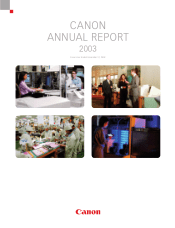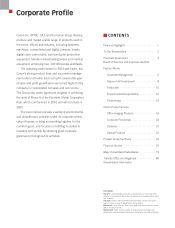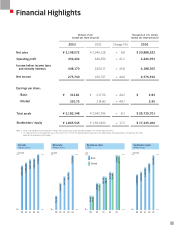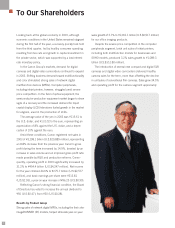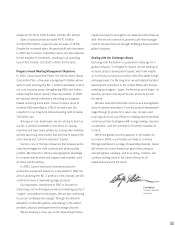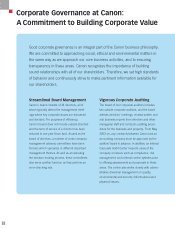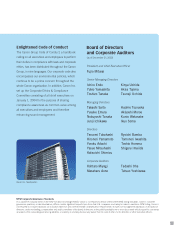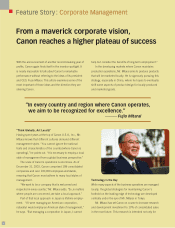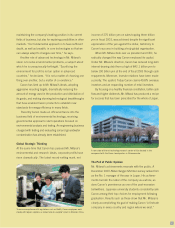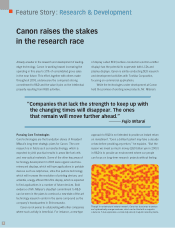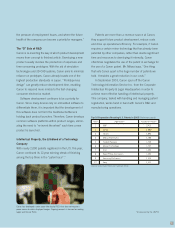Canon 2003 Annual Report Download - page 11
Download and view the complete annual report
Please find page 11 of the 2003 Canon annual report below. You can navigate through the pages in the report by either clicking on the pages listed below, or by using the keyword search tool below to find specific information within the annual report.
the pressure of employment issues, and where the future
health of the company can become a priority for managers.”
The “D” Side of R&D
Canon is re-inventing the way in which product development
moves from concept to finished article. Developing a new
product usually involves the production of expensive and
time-consuming prototypes. With the aid of simulation
technologies and 3D-CAD systems, Canon aims to minimize
reliance on prototypes. Canon already boasts one of the
highest production standards in Japan. “Prototype-less
design” can greatly reduce development time, enabling
Canon to respond more nimbly to the fast-changing
consumer electronics market.
Software development continues to be a priority for
Canon. Since many devices rely on embedded software to
differentiate them, it is important that the development of
this software does not form the traditional bottleneck
holding back product launches. Therefore, Canon develops
common software platforms within product ranges, elimin-
ating the need to “re-invent the wheel” each time a new
product is launched.
Intellectual Property, the Lifeblood of a Technology
Company
With nearly 2,000 patents registered in the U.S. this year,
Canon continued its 12-year winning streak of finishing
among the top three in the “patent race*.”
Patents are more than a revenue source at Canon;
they support future product development, reduce costs
and drive up operational efficiency. For example, if Canon
requires a certain minor technology that has already been
patented by other companies, rather than devote significant
time and resources to developing it internally, Canon
oftentimes negotiates the use of the patent in exchange for
the use of a Canon patent. Mr. Mitarai says, “One thing
that sets Canon apart is the huge number of patents we
hold. It enables a great reduction in our costs.”
In September 2003, Canon spun off the Canon
Technology Information Service Inc. from the Corporate
Intellectual Property & Legal Headquarters in order to
achieve more effective handling of intellectual property.
This company, tasked with handling and managing patent
registration, works hand in hand with Canon’s R&D and
manufacturing operations.
(Source: United States Patent and Trademark Office)
Top 10 Corporations Receiving U.S. Patents in 2003 (Preliminary count)
Rank Organization Number of Patents
1IBM 3,415
2Canon 1,992
3Hitachi 1,893
4Matsushita Electric 1,786
5Hewlett-Packard 1,759
6Micron Technology 1,707
7Intel 1,592
8Royal Philips Electronics 1,353
9Samsung Electronics 1,313
10 Sony 1,311
Canon has developed a color paper-like display (PLD) that does not require a
power source to retain displayed images. Ongoing research is focused on making
larger and thinner PLDs.
*Announced by the USPTO
9

